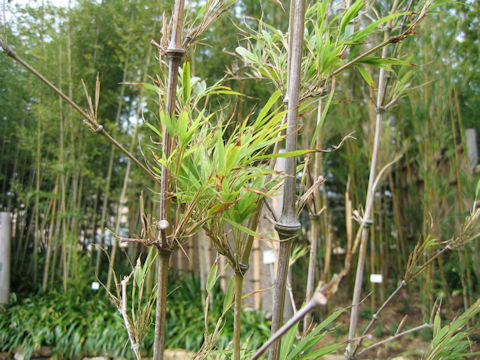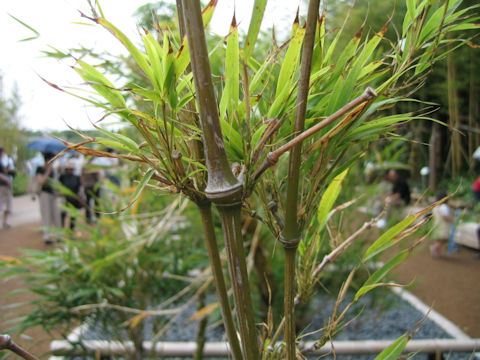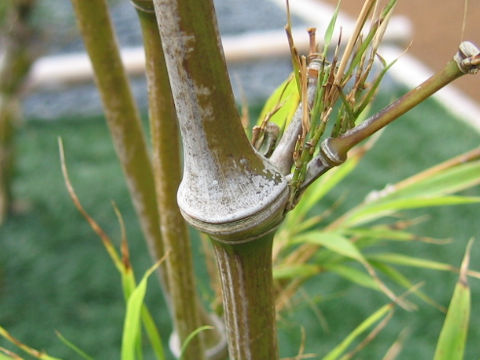
|
The Swollennoded cane bamboo (Qiongzhuea tumidinoda) belongs to Poaceae (the Grass family). It is a bamboo that is distributed in western China. The height of the culm is about 2.4 to 6 m, and it grows in clusters loosely. It is 1 to 3 cm in diameter, but it is characterized by its bulging knots that make it look like an abacus ball. There are 3 branches from each node. The leaves are narrow lanceolate and dark green. It has been used as a cane in China for a long time. The genus name is named after "Qiongzhu Si" (Bamboo Temple), which is famous for its colorful 500 Arhats and located in Kunming City, Yunnan Province. In Chinese, it is called "筇竹" (qiong zhu).
|




